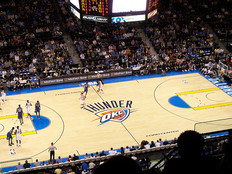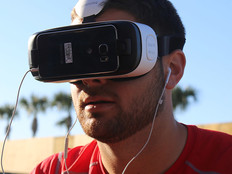Sloan 2017: Teams and Stadiums Approach the Challenge of Fan Engagement
For sports teams, engaging fans requires a concerted effort far outside the confines of an arena or stadium and well beyond the time constraints of a game.
“Fan engagement is a 365-day-a-year practice,” Mike Bernstein, vice president of research and insights with the Wasserman talent agency, said during a panel at the MIT Sloan Sports Analytics Conference in Boston. “It’s not a monologue. It’s a dialogue, and that generates excitement about the team.”
Engaging modern fans requires a comprehensive strategy, a deep understanding of their backgrounds and interests, and a robust technology infrastructure to support engagement efforts, panelists said.
Elisa Padilla, senior vice president and chief marketing officer for the Brooklyn Nets, said the team’s efforts to engage fans begin long before a game starts. The team creates original content, such as video from a morning shootaround, and sends it out to fans via social media. The Nets also use social media to provide fans with information about upcoming games and broadcasts.
Sarah Hirshland, senior managing director for the U.S. Golf Association, said USGA also spends significant time generating content for fans that is used in social, digital and broadcast channels. The organization tries to figure out what content fans will find most compelling, then determines how it can use that content to foster deeper engagement with the sport of golf.
Improving the Fan Experience
Teams can use technology tools such as smartphones to reach out to fans, said Link Simpson, Internet of Things practice lead with CDW, which has deployed technology at numerous stadiums across the country. Data collected from these devices can be stored in the cloud or in a team’s data center to improve its understanding of who fans are and what makes them happy.
Simpson added that sports teams face a challenge in trying to match the experience that fans can have at home — including comfortable seats, robust internet service and easy restroom access — with the experience they have at the arena.
“There’s no doubt that the fan goes to the venue for the experience,” Simpson said. Fans want to have the same quality of internet access that they have at home, he added, and they want information on lines at restrooms and concessions stands so they can minimize the time spent waiting in line.
Safety is also an important consideration as teams work to deliver an excellent fan experience. Smart systems such as networked cameras and stadium safety software can help teams identify potential issues — and deal with them before they become problems.
Using Analytics and Apps to Reach Fans
For most teams, compiling data to feed into analytics systems is a major challenge. Useful sources include social media and ticket sales.
Mobile apps are also a great tool to help teams get a better understanding of where fans’ interests lie, Bernstein said.
Such efforts are essential to building a stronger relationship with fans. “If you’re trying to create loyalty, you have to know who you’re trying to create loyalty with,” Simpson said.
To learn more about how CDW can help your team make better use of its data, visit CDW.com/sportsandentertainment.









